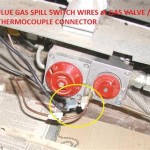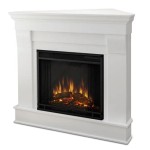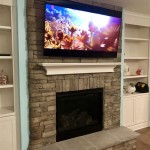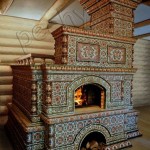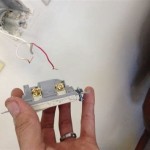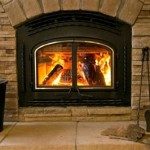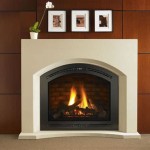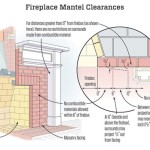Converting Your Wood-Burning Fireplace to Gas: A Comprehensive Guide
Many homeowners with existing wood-burning fireplaces are considering converting them to gas. The appeal of gas lies in its convenience, ease of use, and cleaner burning characteristics compared to wood. A wood-burning fireplace, while offering a traditional aesthetic and the aroma of burning wood, requires significant effort in sourcing, storing, and managing wood fuel. It also produces smoke and ash that necessitate regular cleaning and maintenance. Converting to gas can eliminate these drawbacks, providing a readily accessible and potentially more environmentally friendly heating option.
The conversion process itself involves several steps, from assessing the existing fireplace and chimney to installing the gas line and gas appliance. While some homeowners may be tempted to undertake this project themselves, it is strongly advised to hire qualified professionals familiar with gas line installation and fireplace safety. Improper installation can lead to gas leaks, carbon monoxide poisoning, and potentially dangerous explosions. Local building codes and regulations will also dictate specific requirements and permit processes that must be followed.
Before beginning the conversion, a thorough inspection of the existing fireplace and chimney is crucial. This assessment will determine the overall structural integrity and identify any potential issues that need to be addressed prior to installation. Cracks, deterioration, or blockages in the chimney liner can prevent proper venting of exhaust gases, posing serious safety hazards. Similarly, the condition of the firebox and surrounding masonry should be examined for any signs of damage or weakness.
The type of gas appliance to be installed will significantly impact the conversion process. Gas logs are a popular option, offering a visual imitation of a traditional wood fire. They are relatively easy to install, typically fitting within the existing firebox. Gas inserts, on the other hand, are more elaborate units that are inserted into the fireplace opening, providing a more efficient and controlled heating source. They often feature glass doors and offer a wider range of design options. The choice between gas logs and a gas insert will depend on individual preferences, budget, and heating requirements.
Key Point 1: Assessing Your Existing Fireplace and Chimney
The initial assessment is paramount for a successful and safe conversion. A qualified chimney sweep or fireplace technician should conduct a comprehensive inspection of both the fireplace and the chimney. This inspection should include a visual examination of the firebox, checking for cracks, spalling, or other signs of damage. The damper should be inspected to ensure it is functioning properly and can be fully opened and closed. Addressing these issues before proceeding with the gas conversion ensures a safe and efficient operation.
The chimney liner is a critical component of the venting system. It is designed to protect the masonry structure from the corrosive byproducts of combustion. A deteriorated or damaged liner can allow these gases to seep into the surrounding walls, potentially leading to structural damage and health hazards. A chimney camera inspection can provide a detailed view of the liner's condition, identifying any cracks, gaps, or blockages. If the liner is found to be damaged, it must be repaired or replaced before installing the gas appliance.
In some cases, the existing chimney may not be suitable for venting a gas appliance. This is particularly true for older chimneys designed for wood-burning fireplaces. Gas appliances often require smaller flue dimensions, and the existing chimney may be oversized, leading to poor drafting and condensation problems. In such situations, a new chimney liner specifically designed for gas appliances may need to be installed.
Key Point 2: Gas Line Installation and Appliance Connection
Installing the gas line is a critical step in the conversion process and should only be performed by a licensed gas fitter. A gas line must be properly sized to provide adequate gas flow to the appliance. The gas line material, whether it be black iron pipe or flexible gas tubing, must be approved for use with natural gas or propane, depending on the fuel source. The gas line must also be properly supported and protected from physical damage.
Before connecting the gas appliance, the gas line must be pressure tested to ensure there are no leaks. This involves pressurizing the line with air or nitrogen and monitoring the pressure gauge for any pressure drops. Any leaks must be located and repaired before proceeding. A gas shut-off valve should be installed near the fireplace to allow for easy shut-off in case of emergencies or for maintenance purposes.
The gas appliance should be installed according to the manufacturer's instructions and in compliance with local building codes. This includes ensuring proper clearances from combustible materials and proper ventilation. The appliance should be connected to the gas line using approved fittings and connectors. After the appliance is connected, it should be tested to ensure it is operating correctly and safely.
Key Point 3: Choosing the Right Gas Appliance and Fuel Source
Selecting the appropriate gas appliance is crucial for achieving the desired heating performance and aesthetic appeal. Gas logs offer a visually appealing flame and are relatively easy to install, but they typically provide less heat output than gas inserts. Gas inserts are more efficient and offer greater control over heat output, but they require a more complex installation process.
The choice between natural gas and propane will depend on the availability of natural gas in the area and individual preferences. Natural gas is typically more economical than propane, but it requires a connection to the natural gas grid. Propane is a portable fuel source that can be stored in tanks, making it a suitable option for homes that do not have access to natural gas.
The BTU (British Thermal Unit) rating of the gas appliance should be carefully considered to ensure it is appropriately sized for the space being heated. An undersized appliance will not provide adequate heat, while an oversized appliance can be inefficient and uncomfortable. Consulting with a qualified fireplace professional can help determine the optimal BTU rating for the specific application.
Finally, considering the aesthetic aspects is important. Gas logs come in a variety of styles and materials, replicating different types of wood and burning patterns. Gas inserts offer a range of design options, including different finishes, glass door styles, and flame presentation. Choosing an appliance that complements the existing decor and personal preferences will enhance the overall enjoyment of the converted fireplace.
Converting A Wood Burning Fireplace Into Gas Heat Glo

Wood To Gas Fireplace Conversion In Wisconsin Free Quote Badgerland Waesha
Can I Convert My Wood Burning Fireplace To Gas Woodlanddirect Com

Convert From Wood To Gas With A Insert The Kernel Burner

Wood Burner Conversion New Jersey Fireplaces Kjb

Converting Wood Fireplace To Gas Valparaiso In Northwest Chimney

Wood Fireplaces Gas Conversion That Counts
Can I Convert My Wood Burning Fireplace To Gas Woodlanddirect Com

Gas To Wood Fireplace Conversion Overland Park Ks Firplace Service

Should You Convert Your Cabin Fireplace From Wood To Gas
Related Posts

